
Ports in Cambodia
| The three main international
ports in Cambodia are: Sihanoukville
on the Gulf of Siam, Phnom Penh on the Mekong river, and the provincial
port of Koh Kong.
-
Source: Cambodian government's website www.cambodia.gov.kh
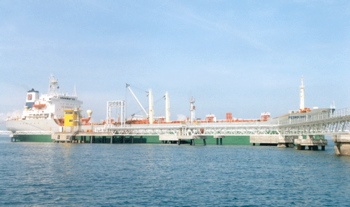 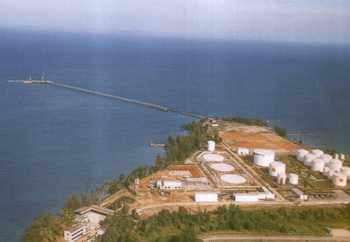 SIHANOUKVILLE PORT Sihanoukville is the main deep-sea port of Cambodia. The Port of Sihanoukville, situated in the Bay of Kompong Som, is the principal and only deep-water maritime port of Cambodia. Kompong Som's natural advantages include deep water inshore and a degree of natural protection from storms provided by a string of islands across the mouth of the bay. The port was built in 1959 with a total capacity of 1.2 million encompassing the old french-built wharf and adjacent new facilities. The capacity of Sihanoukville port, in its present condition, is estimated at about 950,000 tonnes per year, excluding POL which has separate facilities. This is about twice its present traffic. The port can accommodate ships of 10,000 - 15,000 tons deadweight. The main access to the port is via a 3 km fairway channel, marked by buoys and leading lights for daylight navigation only. Due to rocky outcrops in the channel, the entrance to the port is restricted to vessels with a draft of less than 8.0-8.5 m. In practice boats of up to about 10,000 dwt can use the port. The port is located 540 nautical miles (1000 km) from Singapore. 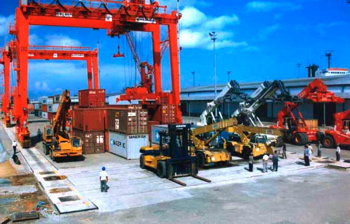 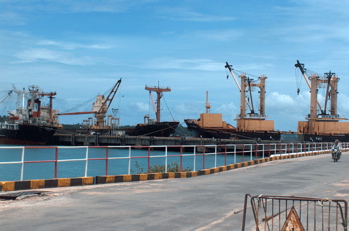 On the land side, the port is served by National Highway No. 4 (NH4) (226 km to Phnom Penh, the main link between Phnom Penh and the coast, and the "New" railway line, completed in 1969, which takes a more southerly route via Kampot. The rail distance to Phnom Penh is 263 km. The railway is in poor condition and handled only some 15% of the port traffic in 1993. Aid from the United States is earmarked for an immediate project to resurface the entire length of NH4 as well as to rebuild several bridges between Phnom Penh and Sihanoukville. Roads within Sihanoukville municipality itself are all hard surfaced, albeit of somewhat lesser quality and poorer condition than NH4. As part of its program to upgrade transport infrastructure in Cambodia, the Asian Development Bank is funding some modest improvements at the port. Immediate investments include the following: new forklift truck for container movement; repair old jetty; replace fenders; replace navigating aids and allow for night navigation; improve container storage yard; and install area lighting to permit night working. There are also reports that French assistance may finance a quayside container crane. (Currently, in the absence of a dedicated crane, the port claims to be able to move 200 containers per 24 hours). 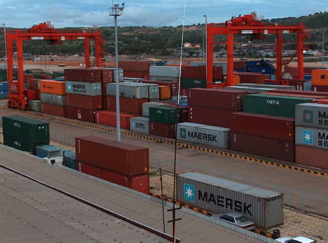 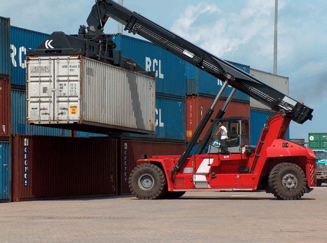 Several warehouses are available providing a total storage area of approximately 6,000 square metres. The two wharfs have a total of five warehouse, one of which is being let out to an oil exploration company. The warehouses have been under-utilised in recent years because of their poor condition, particularly their leaky roofs. Warehouses 1, 2 and 4 are now being repaired under the SRA Project. They have a combined capacity of about 36,000 cu.m. Warehouse 3 was repaired earlier with domestic funds. Container storage and handling is also available. The container yard is 50,000 square metres in area. Regular and direct shipping links with Singapore and Bangkok are in place, with Cambodian-flag shipping (Camtran Ship) being the dominant carrier. In 1993, 15,000 TEU's (20 food equivalents) passed through Sihanoukville Port. An estimated 80 percent of the containers had origin/destination in Singapore. Behind the warehouses fronting the new wharf, there are railway platforms and tracks as well as a container parking area of some 17,600 sq.m. The container area is now being resurfaced under SRAP. Both wharves are also rail-connected. PHNOM PENH PORT Phnom Penh depends on access via the Mekong through the delta area of Vietnam. The Phnom Penh port is the country's traditional river port, accessible to vessels from the South China Sea through Vietnam.Phnom Penh port is located in-the city, on the Sap river some 3-4 km from its junction with the Mekong. It is some 330 km from the mouth of the Mekong of which about 100 km is in Cambodia and the rest in Vietnam. The distance from Singapore is about 1450 km. Vessels of up to 2,000 dwt-can use the route without difficulty, and 5,000 dwt boats can pass the entrance to the Mekong (the 'Main bottleneck) on favourable tides. Regular dredging is necessary at three points in Cambodia for the 5,000.dwt vessels to reach Phnom Penh. The port serves up to 150 ships per year, including 3 Singapore-based cargo vessels which take 10-12 days for the return voyage. INFRASTRUCTURE The main-cargo port consists of two sites, generally called Port No. 1 and Port No. 2: Port No. 1 (the main port) consists of a 184-m long pier built in reinforced concrete, plus three pontoons for sea-going vessels. There are two berths, known as Berths 4 and 5, which can accommodate ships up to 2,000 dwt and 4,000 dwt, respectively. Some 540 m of domestic pontoon capacity is available for riverine ships and barges of up to 100 m or 1,800-2,000 tonnes. The pontoons are served by lighters and junks. There are other berths available for small craft. There are 12 depots of 2,700 sq m and 5,910 tonnes storage capacity within some 180 m of the berths, plus open storage of some 4,300 sq. m. There is another warehouse complex at Kilometre 6 (Phnom Penh) having 15 sheds with a total capacity of 70,000 tonnes and 8 sheds of nearly 4,000 tonnes. Although actual crane capacity is not dear, there are 12 cranes- i.e. 2- 25 tonne units, 4-16 tonne and 6-6.5 tonne cranes. Port No. 2, about 1 km south of the main area, consists of two 45 m by 10 m steel pontoons. Due to the long and narrow bridges and the seasonal variation in water levels, these two berths cannot be reached by equipment and are limited to bagged or other light traffic. The capacity of the main port (No. 1) has been estimated at about 150,000 tonnes per year, a figure already exceeded. This port is now to be rebuilt with the aid of a Japanese grant. The improvements are expected to increase the capacity to some 566,000 tonnes per year. As an interim measure, Port No. 2 will be rehabilitated under a World Bank credit. -When the improvements to Port No. 1 are completed, Port No. 2 could perhaps revert to domestic use (up to 1991, Port No. 2 was for domestic use only). KOH KONG PORT Koh Kong is situated near the Thai border and is used by small boats, below 500 dwt. The Koh Kong provincial port is really a system of three ports. Vessels entering Cambodia from Singapore, Malaysia or Thailand call first at Paklong, on the Gulf of Siam about 15 km from the Thai border, for customs clearance and other formalities. Up to 300-tonne capacity boats can be accepted, or 500 tonnes at anchorage. The 300-tonne boats can then proceed across the bay to Koh Kong town for unloading or transhipment to smaller vessels if required. Koh Kong is a small provincial capital with no road access to the rest of Cambodia. Road 43 can only be used (with difficulty) by motor cycles at present. Thus after clearance most boats proceed to another provincial port al Sre Ambel, at an inlet the Kompong Som Bay near Road 4, some 170 km from Phnom Penh. Sre Ambel can only accept 120-130 tonne boats, however. Traffic that arrives at Koh Kong in larger boats has to be transhipped between vessels at Paklong or Koh Kong town. Paklong and Koh Kong have quite good but limited facilities and are very congested, particularly Paklong. There is some warehousing in Koh Kong town to support the transhipment activity. Koh Kong is also a quite an important fishing port, from which about 16,000 tonnes were exported to Thailand in 1993. OTHER PORTS Cambodia’s other seaport is at Kampot., 148km from Phnom Penh along Road 3 or 166km by rail. The port is situated in the town on a river bank 4 km from the sea. Of the minor ports, Kampot is the most important coastal facility. It was more important before 1975 when it had better facilities and was able to take vessels of up to 150 tonnes or more. It is a lighter port, with two main approaches from the sea, one of which has fairway depths of 10 m to within 11 km of the port. The other southern channel could accommodate vessels of less than 4.6 m draft. There are three channels through which junks and lighters could enter the river to reach Kampot. A wooden jetty can be used by 30-40 tonne boats. There is a regular trade with Koh Kong, for exchange of goods with Thailand, but Kampot port is not itself used for international traffic. The other river ports, for example Kompong Cham on the Mekong, are in general also used for domestic traffic only. A small port exists at Kompong Ampil, in Takeo province, where there is a fair amount of trade with Vietnam via a small river that leads into the Bassac, but most boats are only of 25-30 tonne capacity. |
Copyright, 2007 © Runckel
& Associates
Terms
of use
|
|
www.Business-in-Asia.com